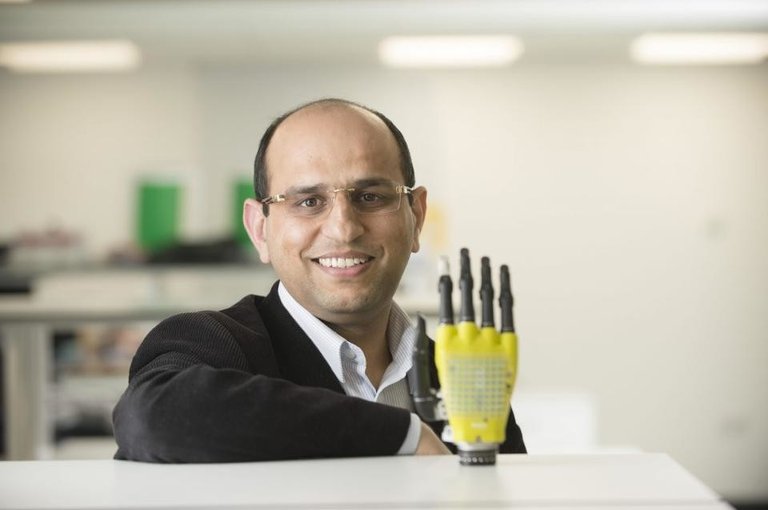
We do not know if the robots of the future will achieve self-awareness, but what is more than probable is that they see, hear and feel much more and better than we do. And among those amplified senses is, of course, the sense of touch.
A researcher at the University of Glasgow has created a fabric that is more sensitive to the touch than the hand of any human being, and also feeds through solar cells that allow it to function uninterrupted.
For robots, but also for better and cheaper prostheses
The secret of this small glove for robotic hands is the use of graphene, which thanks to a very thin layer with this material provides that ability to convert the tissue into a touch sensor that needs very little power, barely 20 nanowatts per square centimeter.
To solve the problem of energy, Professor Ravinder Dahiya created a matrix of solar cells that, according to him, "when there is light available, 98% of it will be collected by the solar cell." It is the collected energy that will be used to obtain solar energy. that sensitivity, the tactile sense. "
For Dahiya, this fabric makes it possible to obtain a sense that is "an order of magnitude better than human skin", and the applications of this creation are multiple. In fact, the researcher believes that they can help to significantly improve the prosthesis for patients with amputated limbs. The production of a prosthesis of a hand would be around 350 dollars, a price much lower than that offered in other solutions. Without forgetting, of course, that the robots of the future could also obtain that sense of privileged tact with developments like this.
Very interesting, In the future we will can live a more sensitive life, with bionic skin in our body and maybe in the walls of our house.